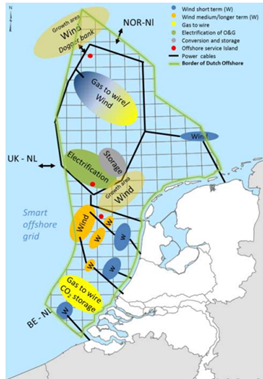NSE Partner in the picture
February 27, 2024
Madelaine Halter, TNO:
“Sharing is caring”
To enhance the participatory process, we interview NSE participants, representatives from politics, policy and administration, and stakeholders from the sector to share their vision on the role of the North Sea in the energy transition and the opportunities and challenges they see for system integration. This interview captures Madelaine Halter's insights on the evolution and current focus of the NSE program, shedding light on its collaborative efforts and achievements over the years.
Madelaine, you have been the NSE program lead since its inception in 2017. What developments have you witnessed over the past period? Can you share the journey of the program from its early stages to its current state?
We delved deeper into offshore hydrogen and power-to-x options, screened different offshore structures, and developed the North Sea Energy atlas. Our partnership grew from 10 to almost 40 partners over seven years, encompassing various sectors and countries. We constantly strive to enhance our collaboration with partners, policymakers, and stakeholders, aiming to improve alignment and address future challenges collectively.”
What is the current focus of the NSE program in its fifth phase, and how are you approaching the research and collaboration with stakeholders in this phase?
Madelaine: “In the fifth phase of the program, we are building upon previous work by focusing on three hubs: North, East, and West. We are developing spatial blueprints for these hubs, envisioning their potential in 2050 and engaging stakeholders to gather their insights and feedback. Once we establish agreement on the spatial blueprints, other aspects of the program can address ecological, environmental, and logistical considerations, and strengthen international connections to support EU ambitions.”
With eight work packages in the current phase, how do you ensure alignment and coordination among the various work packages to achieve a cohesive outcome?
Madelaine: “In the North Sea Energy program, we recognize the importance of collaboration across sectors and disciplines to derive true value. Working together towards a shared goal is our key approach, albeit a complex one given the multitude of partners involved and interdependent work streams. The interconnected nature of the program, much like the future energy system itself, requires careful coordination and communication to deliver impactful results. It's a rewarding journey that necessitates a mindset of interaction and collaboration among all participants. Sharing knowledge and resources is fundamental to our success. We can only manage this program together: Sharing is caring.”

